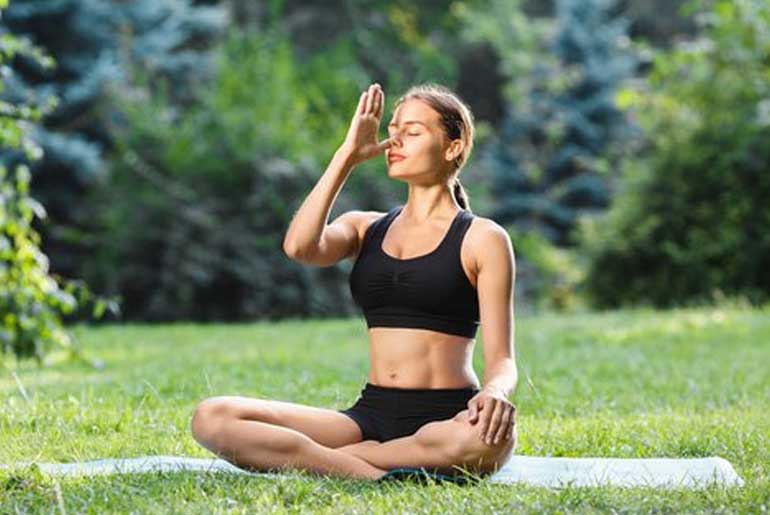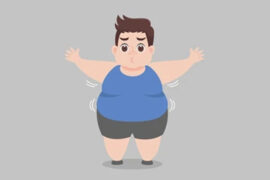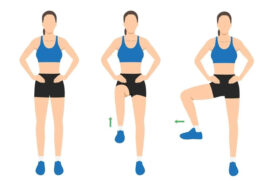The Japanese long-breathing exercise, championed by actor Miki Ryosuke, has gained attention for its claimed weight loss benefits. Ryosuke initially developed the technique to alleviate back pain but unexpectedly experienced a weight loss of 13 kgs within weeks. The premise of the Japanese long-breathing exercise is rooted in the belief that deep breathing, reaching fat cells with oxygen, leads to the disintegration of fat composed of oxygen, carbon, and hydrogen, thereby aiding weight loss.
While the Japanese long-breathing exercise has been marketed as a weight loss tool, it’s essential to note that there is limited direct scientific evidence supporting its efficacy in promoting weight loss. The reported weight loss benefits may be attributed to other factors, such as stress reduction and increased energy levels. Reduced stress levels can contribute to overall well-being, and increased energy levels may lead to heightened physical activity, subsequently promoting calorie burn and weight loss.
As with any weight loss approach, it’s crucial to adopt a comprehensive and evidence-based strategy that includes a balanced diet, regular physical activity, and sustainable lifestyle changes. Relying solely on specific Japanese long-breathing exercises for significant weight loss may not provide a comprehensive solution. Individuals seeking to lose weight should consult with healthcare professionals or registered dietitians to develop personalized and evidence-based weight management plans.
The ‘Long Breath Diet’ or ‘Ryosuke Breathing Method’ appears to offer various potential benefits, even if the specific weight loss claims are not universally supported. Some of the positive effects associated with this Japanese long-breathing exercise include:
- Improved Lung Capacity: Engaging in deep breathing as part of this exercise can enhance lung capacity and increase oxygen intake, potentially benefiting respiratory health.
- Stress Reduction: The deliberate breathing and mindful movements involved in the exercise contribute to stress reduction. Practicing controlled breathing techniques is often associated with relaxation and stress management.
- Body Awareness: The exercise promotes awareness of body posture, aiding in improved alignment and balance. This heightened awareness can contribute to better overall body posture and movement.
- Energy and Vitality: Some practitioners believe that the exercise invigorates the body, fostering a sense of vitality and increased energy levels. This effect may be linked to the combination of deep breathing and intentional movements.
While the weight loss claims associated with the ‘Long Breath Diet’ may be met with skepticism, Japanese long-breathing exercise’s potential benefits in terms of respiratory health, stress reduction, body awareness, and increased vitality suggest that it could be a valuable addition to a holistic approach to well-being. As with any exercise or wellness practice, individual experiences may vary, and it’s advisable to consult with healthcare professionals or fitness experts to ensure that the chosen practices align with individual health goals and conditions.
How to perform the exercise:
The ‘Long Breath Diet’ or ‘Ryosuke Breathing Method’ involves a specific set of steps to perform the Japanese long-breathing exercise. Here is a step-by-step guide:
Posture:
- Stand upright with your feet about shoulder-width apart.
- Keep your back straight, and your body relaxed.
Body Position:
- Place one foot forward (about 30 cm or 12 inches) and transfer your weight to that foot.
Muscle Engagement:
- Tighten your buttocks as you shift your weight to the front foot.
- Tense your muscles throughout your body, especially the leg muscles.
Arm Position:
- While tensing your muscles, lift one arm in front of you with the palm facing down.
- Extend the arm forward at shoulder height.
Breathing Technique:
- Inhale deeply and slowly through your nose for 3 seconds, filling your lungs with air.
- Exhale forcefully through your mouth for 7 seconds, contracting your abdominal muscles as you do so.
- The exhalation should be strong and rhythmic, as if you’re blowing out candles on a birthday cake.
Repeat:
- Perform the breathing cycle (inhale for 3 seconds, exhale for 7 seconds) for 2-10 minutes, depending on your comfort level and fitness.
Switch Sides:
- After completing the exercise on one side, switch your stance and repeat with the other foot forward.
It’s important to note that while Japanese long-breathing exercise may offer benefits such as improved lung capacity and stress reduction, the specific weight loss claims should be approached with caution. Individuals considering incorporating this breathing exercise into their routine should consult with healthcare professionals or fitness experts, especially if they have any underlying health conditions or concerns.
Disclaimer:
The information contained in this article is for educational and informational purposes only and is not intended as a health advice. We would ask you to consult a qualified professional or medical expert to gain additional knowledge before you choose to consume any product or perform any exercise.







